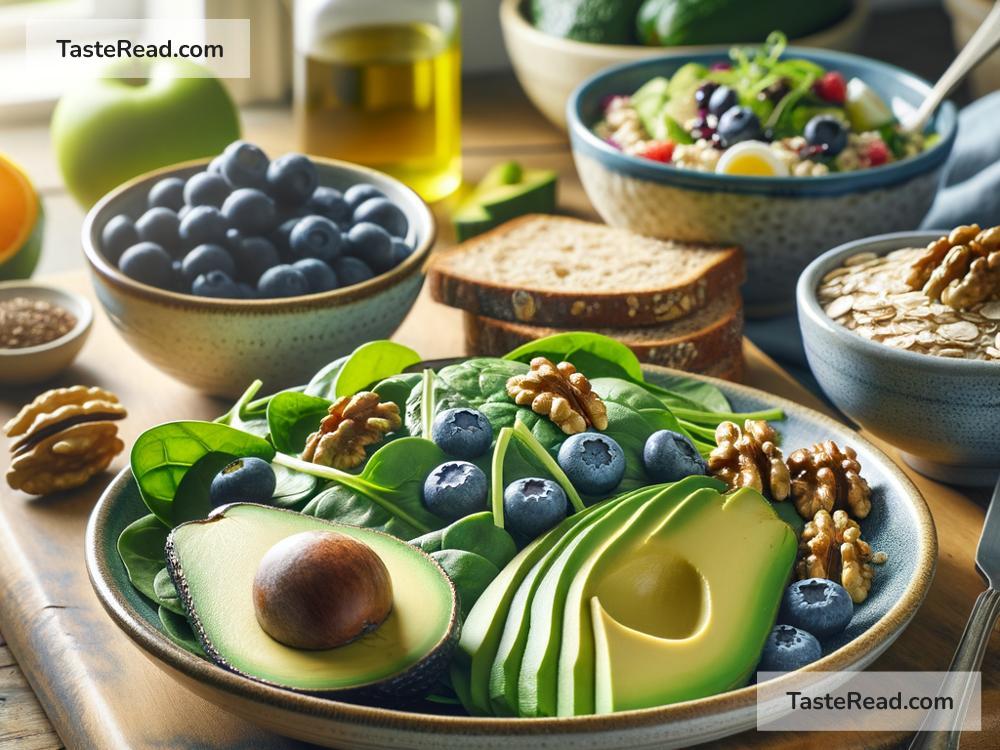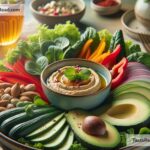Foods That Reduce LDL Cholesterol
Cholesterol is a word that many people hear in conversation about health, but not everyone understands it fully. In short, cholesterol is a waxy substance found in your blood. Your body needs some cholesterol to function properly, but having too much of it—especially the “bad” kind—can lead to serious health problems like heart disease and strokes. LDL cholesterol, often called “bad cholesterol,” contributes to the buildup of fat deposits in your arteries, which can block blood flow and cause problems over time.
The good news? You can take steps to lower your LDL cholesterol levels, starting with changes to your diet. Certain foods are proven to help reduce LDL levels naturally, and incorporating them into your daily meals can make a big difference for your health. Let’s explore some of these cholesterol-lowering foods and why they are good for you.
1. Oats and Whole Grains
One of the easiest ways to start lowering LDL cholesterol is to eat more oats and whole grains. You’ve probably heard of oatmeal being heart-healthy, and it’s no exaggeration. Oats contain a type of soluble fiber called beta-glucan that helps reduce cholesterol absorption in your bloodstream. Fiber acts like a sponge, capturing cholesterol and helping your body eliminate it before it has a chance to cause harm.
Switching from refined grains (like white bread and white rice) to whole grains (like brown rice, quinoa, and whole-grain bread) can also make a big impact over time. Whole grains provide fiber that supports heart health and keeps LDL levels under control.
2. Nuts
Nuts, such as almonds, walnuts, pistachios, and cashews, are packed with nutrients that benefit heart health. They contain healthy fats, fiber, and plant-based compounds that help manage cholesterol levels. While nuts are higher in calories, they make an excellent snack in small portions—not only are they delicious, but they also help tackle LDL cholesterol in a natural way.
Walnuts and almonds are particularly good choices because they’re rich in omega-3 fatty acids, which are known for their heart-protective qualities. Try sprinkling nuts on your salads, oatmeal, or yogurt for added crunch and health benefits.
3. Fatty Fish
Fatty fish, like salmon, mackerel, trout, and sardines, are full of omega-3 fatty acids, a type of healthy fat your body needs. Unlike saturated fats, which can increase LDL cholesterol, omega-3 fats work to reduce LDL levels and improve heart health overall. They can also help raise levels of HDL cholesterol, the “good cholesterol,” which helps remove harmful fats from your bloodstream.
Experts recommend eating fatty fish at least twice a week. If you don’t enjoy fish or can’t get fresh seafood often, you might consider fish oil supplements as an alternative source of omega-3s—but always consult with your doctor first.
4. Fruits and Vegetables
Adding more fruits and vegetables to your diet is one of the simplest, most effective ways to lower LDL cholesterol. Many fruits, such as apples, oranges, berries, and pears, are rich in soluble fiber, which actively helps reduce cholesterol. Citrus fruits like oranges and grapefruits contain special compounds called flavonoids that support heart health.
Cruciferous vegetables—like broccoli, cauliflower, kale, and Brussels sprouts—are known for their cholesterol-lowering properties too. Veggies not only deliver fiber but also antioxidants, vitamins, and minerals that work together to protect your heart. Make sure half your plate at every meal is full of colorful veggies for maximum benefits.
5. Beans and Legumes
Beans and legumes, such as lentils, chickpeas, black beans, and kidney beans, are incredibly heart-friendly foods. These are high in soluble fiber, which is key to lowering LDL cholesterol levels. Beans are also a good source of plant-based protein, making them a great alternative to meat.
Eating beans regularly can keep your cholesterol in check while helping you feel fuller for longer due to their fiber content. Use them in soups, stews, salads, and even dips like hummus for a cholesterol-cutting boost.
6. Avocados
Avocados contain monounsaturated fats—healthy fats that are good for your body. These fats can help lower LDL cholesterol while raising HDL cholesterol levels. Avocados are also rich in fiber, which plays a role in blocking cholesterol absorption during digestion.
Whether sliced on toast, blended into smoothies, or as the base of guacamole, avocados are a nutritious and versatile food worth including in your cholesterol-lowering diet.
7. Olive Oil
Swapping out unhealthy fats like butter or margarine for olive oil can make a noticeable difference when it comes to LDL cholesterol. Olive oil is full of monounsaturated fats that support heart health and lower harmful cholesterol.
Extra virgin olive oil is the best choice, as it’s less processed and packed with antioxidants that protect against heart disease. Use it as a salad dressing, sautéing oil, or drizzled over cooked vegetables for a delicious and heart-healthy option.
8. Plant Sterols and Stanols
Some foods, such as fortified orange juice or certain spreads, contain plant sterols or stanols—compounds that mimic the structure of cholesterol and block its absorption in your digestive system. Adding these fortified foods to your diet can help reduce LDL cholesterol levels naturally.
Conclusion
Lowering LDL cholesterol doesn’t have to mean taking medicine right away. Eating the right foods can help you manage cholesterol levels and improve your overall heart health. Focus on oats, whole grains, nuts, fatty fish, fruits and vegetables, beans, avocados, olive oil, and plant sterols to keep your cholesterol in check.
Small changes in what you eat can make a big difference over time. Your heart will thank you!


